We have had an ongoing management advisory relationship with Heritage NSW that has extended over a number of years. The Division was going through a period of significant change to modernise the business of heritage management, support a new Heritage Council and navigate machinery of government changes, including an effective budget cut. The key challenge was to set a clear strategic direction, align the organisation around that direction and streamline business processes to manage to the available resources.
Projects
Leadership in action: Heritage NSW
Client.
Heritage NSW
Services
Leadership, Review, Strategy
An ongoing advisory relationship to realign direction and organisational focus in a changing context.
01.
Client issue
02.
Our approach
Greg delivered a support program with the Executive team over the course of 18 months, combining a mix of group direction setting and planning with individual level coaching to align personal development with the organisational goals. The focus of the activity was:
- Building trusting relationships and a culture where all views could be expressed
- Agreeing ways of working, including the capacity to name effective and ineffective behaviours
- Agreeing ways to keep each other to account and implementing them
- Clarifying the role of the Executive team, particularly the strategic focus, what needed consideration by the Executive and what should be dealt with by units. One of the specific challenges was that the Executive perceived that too much was coming to them for approval, and they wanted to delegate responsibility more effectively to individual Executive team members and their direct reports.
The program involved five different modes
- Working with the ED to articulate a clear direction, particularly in framing a restructure to meet a significant budget cut
- Working with the Executive team to agree a strategic plan, a collective approach to working together effectively and tracking the effectiveness of team meetings
- Executive coaching with team members to help them identify growth areas and support their development, and to align their ways of working to the joint goals agreed by the Executive team
- Working with the Heritage Council to articulate an overall strategic direction for heritage management and help the Council focus on directing attention to the highest priority areas
- Facilitating a whole of Division staff forum to develop the content of the business plan for the Division.
03.
Result
- Strategic plans for the Division and the Council that align on key issues
- Executive team self-reflection is that the team is more functional, more cohesive and better at making decisions.
- Changed management practice; for example Executive meetings are shorter and more targeted
- Key projects to streamline business processes and improve efficiency and effectiveness have been successfully delivered.
- The team has effectively engaged as a group in determining how to respond to budget cuts (10%+).
- The team has successfully managed a number of difficult events, including high profile cases that have played out in public.
04.
Key learnings
- Interpersonal relationships are a critical element of an effective Executive team. The time and effort spent to build and maintain those relationships is a worthwhile investment. The temptation in a high-pressure agency is to focus on the content at the expense of relationships. Yet both are needed for the organisation and team to be effective, particularly when dealing with difficult and contested issues.
- Having a consistent approach across multiple levels of the organisation—Council, Executive team, individual Executive team members—made it possible to embed commitments more effectively.
- Executive-level change requires commitment and reinforcement to ensure that all the participants stay aligned on the overall agreed position, and collectively renegotiate an agreed position as the context changes.
“The Insight Partnership work was both insightful and affirming. They worked with us as true partners, helping us respond to major challenges in our operating environment.”
Executive Director

